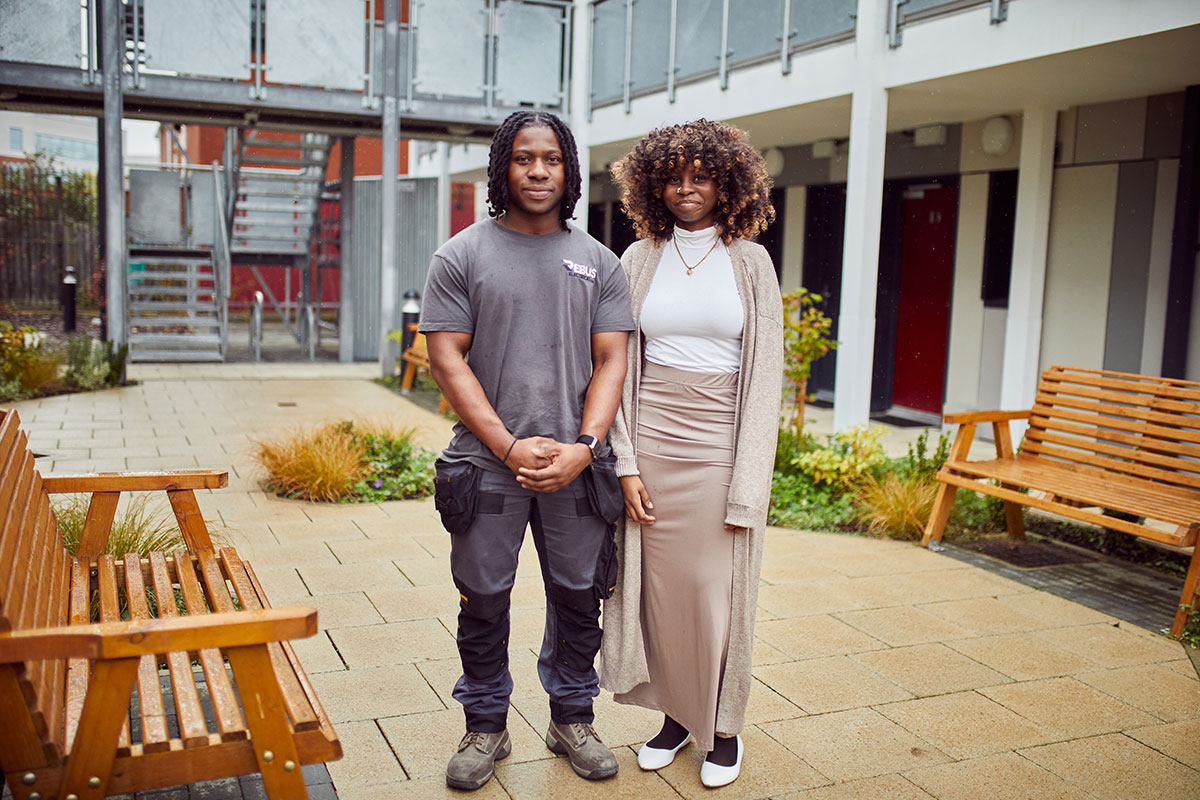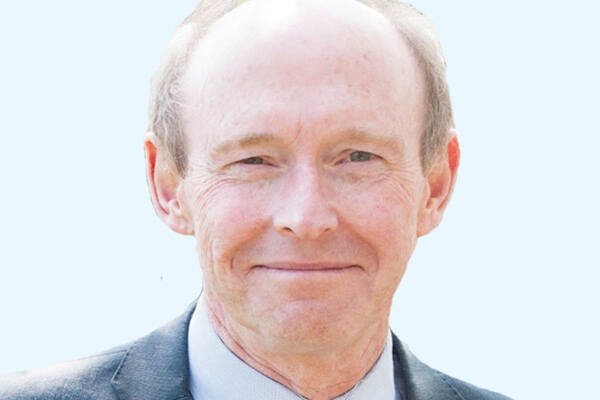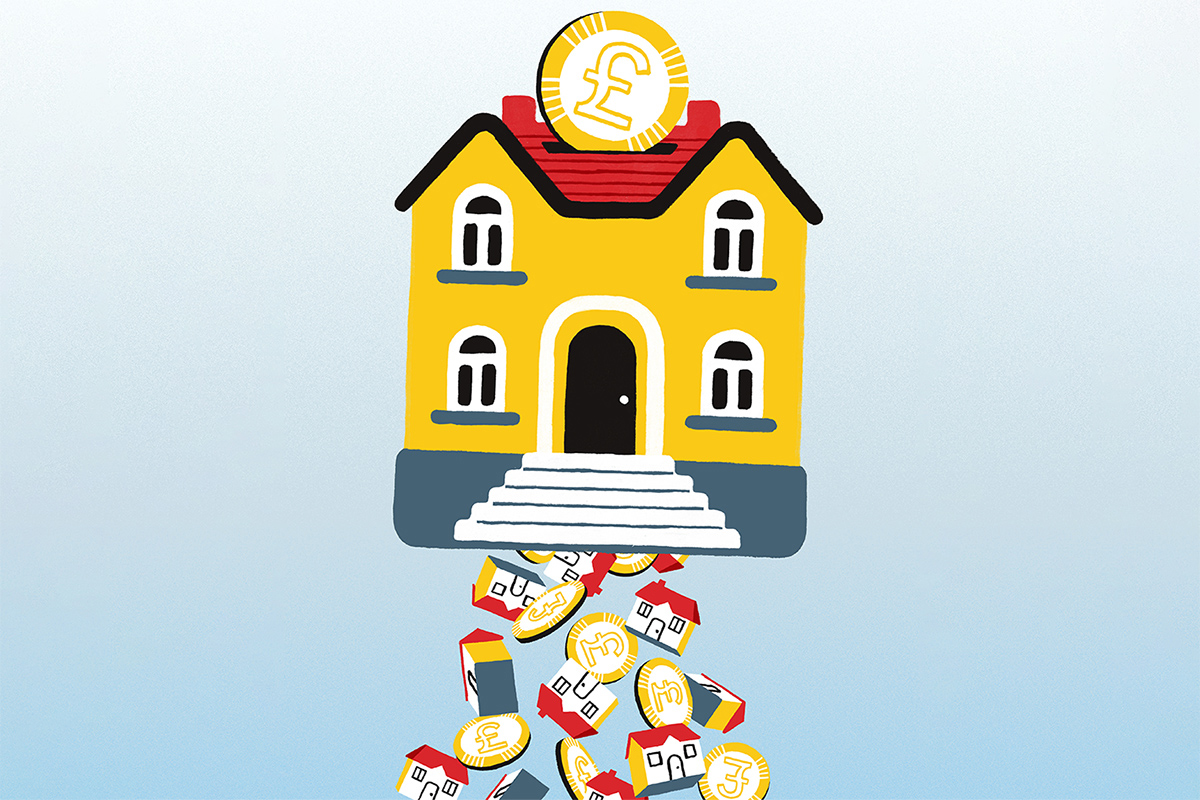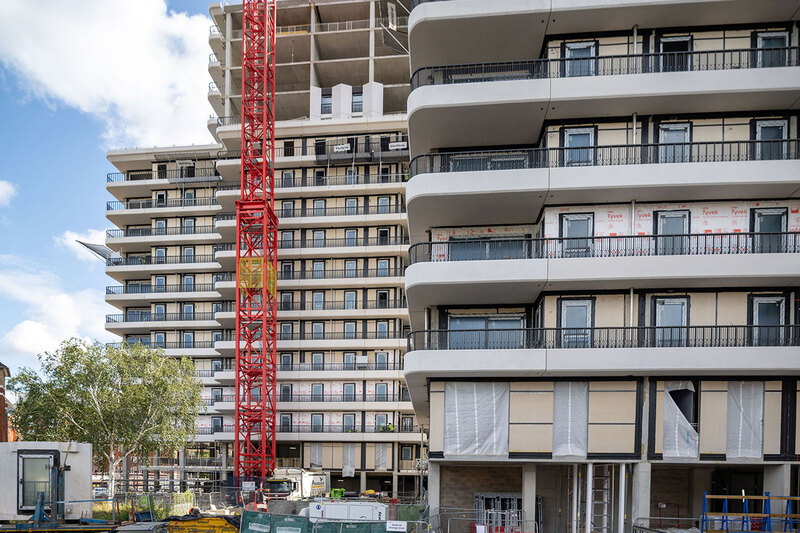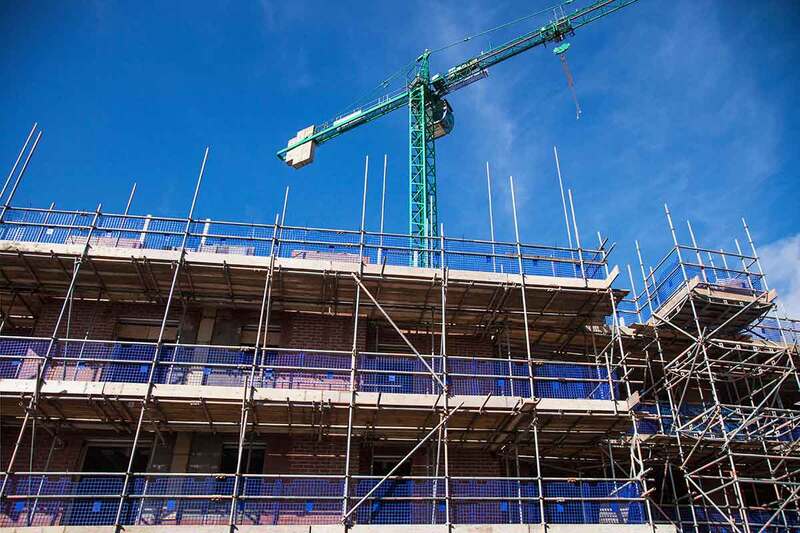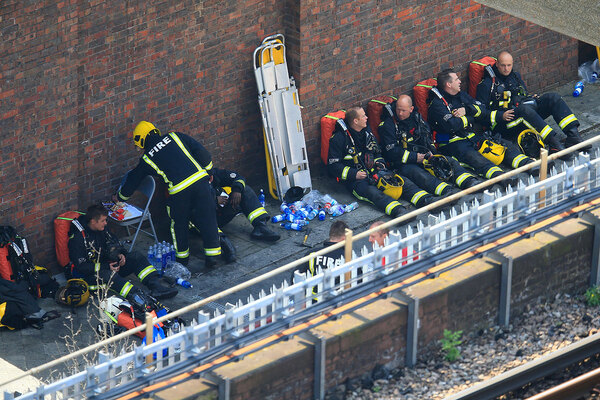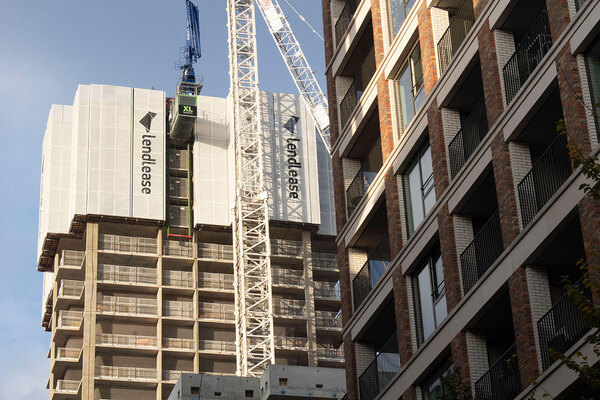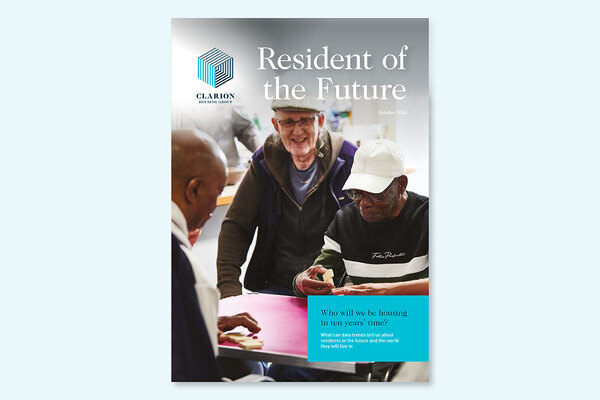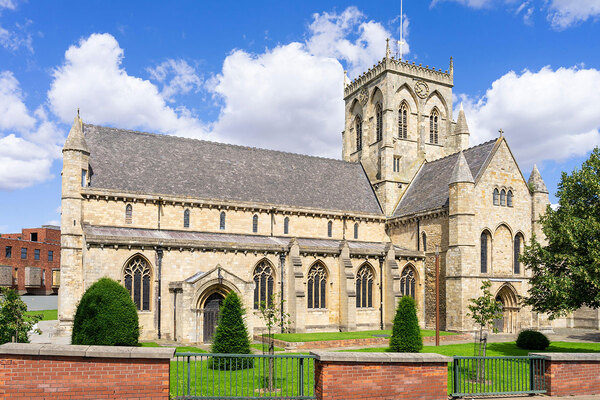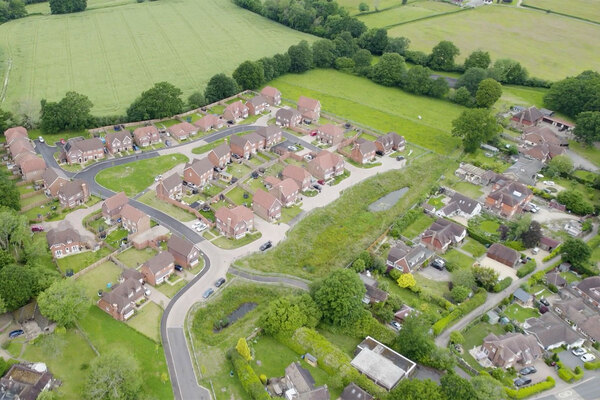You are viewing 1 of your 1 free articles
How to build social rent in the heart of London
Westminster City Council’s plans to regenerate the Ebury Bridge Estate in wealthy Pimlico failed after a developer could not be found. The council went back to the drawing board and returned with a green development from its in-house team – and much more social rent. Jess McCabe visits to find out more
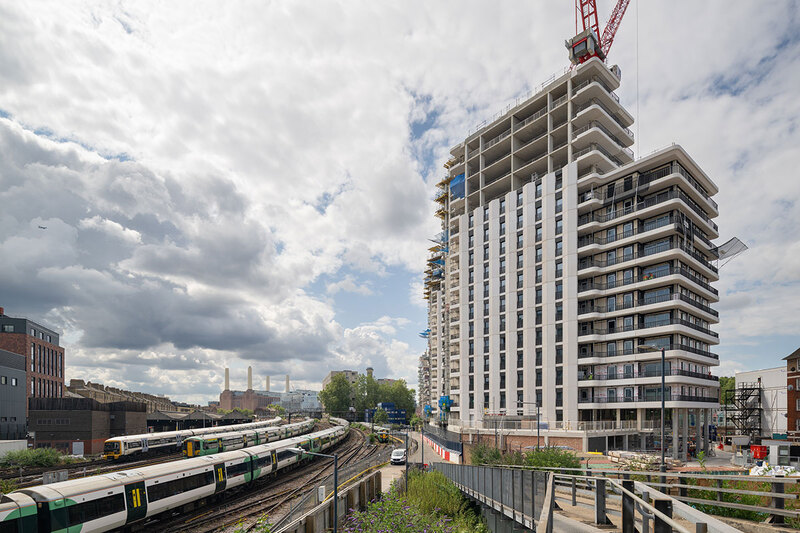

On one side of Ebury Bridge Road, Chelsea Barracks is under construction. A seven-bedroom, Georgian-style townhouse on the development is being marketed at £55m.
On the other side of the road is another busy construction site. But here, Westminster City Council is the developer, and the project is the regeneration of the council’s Ebury Bridge Estate. When complete in 2030, the new Ebury will have 369 new social rent homes, a 56% increase in social housing compared to before the regeneration started.
Inside Housing is here to see more of this project. But we also want to find out how Ebury fits into Westminster’s development plans, because it is one of the most proactive council builders in the UK.
Westminster ranked second in Inside Housing’s Top 50 Biggest Council Builders, having completed 549 homes in 2022-23. So we wanted to find out how the council’s relatively young development team is making a mark. What are its plans for the future? And how is the development pipeline faring under unprecedented financial pressures?
Views of the capital
At Ebury, we gather into the construction workers’ lift as it creaks up to the top floor of the first block of social rent and leaseholder homes that will be completed next year. From this high vantage point, the city is laid out before us. Looking south, we can see that the leaseholders and tenants who return will have stunning views across the Thames to Battersea Power Station.
We turn around to look north, and James Green, Westminster’s director of regeneration and development, tries to spot some of the council’s other sites.
“I see this as two bookends: this one [Ebury] in the south and Church Street in the north,” he says, referring to the council’s other big regeneration project of 1,120 homes. “Then you’ve got a lot of smaller, but no less significant development sites across the borough. We’re even building affordable homes right by Marylebone Station.”
Next year, his development team expects to complete 418 homes, of which 340 will be affordable – largely for social rent. Westminster is investing £1.6bn over the next 10 years, with a pipeline of 4,000 homes. Of this, £1bn will come from capital receipts on the sale of homes at sites such as Ebury, which also includes 212 for the open market.
Martin Crank, senior programme manager at the council, says: “It’s very challenging, with conservation areas, community groups, [and some] very high-powered individuals, who might not particularly want lots of new social housing next door to them. So it takes quite a robust approach to make sure that we can deliver it.” About 77% of the borough’s buildings are in conservation areas.
The walls of the new flats curve elegantly and balconies are decorated with twirling rails. The council is targeting an Energy Performance Certificate rating of Band A, and the scheme has already chalked up an ‘outstanding’ rating from BREEAM for its sustainability. A ground source heat pump will supply heat to the flats and the blocks will be topped with solar panels. Greywater recycling will cut water use by 30%. Thought has also been put into reducing the embodied carbon from construction work (see box, below).
Before the regeneration, Ebury had 336 homes in total. When the project is finished, this number will be 781 – of these, 369 will be for social rent. A total of 198 are replacements for council homes knocked down in the development, and 171 will be new lets. In total, 21 out of 140 leaseholders will also be returning.
“It’s very challenging, with conservation areas, community groups, [and some] very high-powered individuals, who might not particularly want lots of new social housing next door to them. So it takes quite a robust approach to make sure that we can deliver it”
Westminster has committed to 50% affordable housing across its development projects, made up of social rent and London Living Rent (it does not tend to do shared ownership, Mr Green explains, because the high property values in Westminster mean the numbers do not stack up).
While the market sale flats at Ebury will be expensive, this is not the same sort of project as the Qatari-funded Chelsea Barracks across the road.
You cannot call the market sale flats in Ebury affordable – a three-bedroom home facing swanky Sloane Square is expected to sell for about £1.5m, while a two-bedroom home will go for around £850,000. But Westminster says it is in range of local buyers in the area – bear in mind that one of the nearest shops to the estate is Ian Bennett Bespoke Millinery, “the only milliner left in the world making new black silk top hats to order”.
Embodied carbon
Before the council decided to redevelop Ebury, the case for demolition and rebuild had to be compared with a retrofit option. This included a calculation of the embodied carbon, or the emissions from materials used in construction, and involved in demolition and rebuilding, compared to keeping the old homes.
The carbon emitted from building Ebury will be paid off in only 12 years, through savings from reduced energy usage, according to calculations done by engineers at Arup. The finished homes are going to be energy efficient, but the focus on embodied carbon has also influenced the design and selection of materials. The rubble from the old buildings has been reused, to create a sub-base for the new builds. Westminster’s Martin Crank says: “We got people driving past from other sites saying, ‘Can we buy that from you?’ [We had to say]: ‘No, we’re using it!’”
The council is one of many that has declared a climate emergency and is targeting carbon neutrality by 2040.
“Each flat, no matter whether it’s for sale or for social rent, is exactly the same size. So no one’s getting a penthouse. There are no penthouses,” says Mr Crank.
Other central London projects have faced criticism over ‘poor doors’ and playgrounds that social tenants and shared owners cannot access. Westminster, which has 21,000 homes, wanted to make the development as tenure-blind as possible – although social tenants and returning leaseholders will be in separate blocks, to keep service charges manageable.
To allow leaseholders to return to the development, Westminster has offered them a shared equity deal.
“If the leaseholder’s coming back to a flat worth £750,000 and their old flat was worth £500,000, we just hold a bit of equity, in perpetuity,” Mr Crank explains.
“There was a huge engagement piece to be done, but also a new scheme to be designed and worked up, which is where we are standing today”
But getting to this position has been a rocky road. The first red-brick blocks of the original estate went up in 1929, with the rest following in the next decade. Built on reclaimed land that used to be an industrial canal, by the 21st century, these flats were leaky and damp. One block was made up entirely of bed-sits. The council first proposed demolishing and rebuilding the estate in 2013, and residents began moving out in 2016. But those plans had to be scrapped as no commercial developer could be found to take on the project. At the time, a spokesperson for the residents’ Ebury Bridge CommUNITY group told Westminster Extra: “We have had about five years of not knowing what the hell is happening to our homes. You are dealing with homes here, not housing stock or units.”
“That ended pretty acrimoniously. It didn’t deliver what the council wanted, it wasn’t viable. And the estate, I think it’s fair to say, were annoyed,” Mr Green sums up.
Westminster went back to the drawing board and came up with a new plan in 2018. “There was a huge engagement piece to be done, but also a new scheme to be designed and worked up, which is where we are standing today. I think it’s fair to say it’s a pretty good story… coming from a very difficult situation.”
Consultation with residents
Mr Crank explains that the council went back to residents and scoped out the “red lines” for them on regenerating the estate. “Obviously, the first one was full right of return for everyone. But the other one was that there will be no decrease in social housing,” he says. Unsurprisingly, some have settled elsewhere, given that it has already been seven years since the first residents were moved out, but residents wanted to ensure that even if they decided not to return, their social rent home would still be replaced.
Rather than hiring a developer, Westminster decided to take on the developer role itself. This was possible because six years ago, Westminster hired Mr Green to start its own development team.
At the time of the first plans to redevelop Ebury, Mr Green says: “[The council] was very reliant on partnering with developers to do it for us. They want to profit, typically about 20%. And they want to limit the risk. And you’re very reliant on that partner to deliver for you. But since that approach and that time, we’ve built up the capacity within the council that has got the skills, that has got the experience.”
Of the homes the council currently has on site, he estimates that about 80% are led by the council.
In 2022, Labour took control of the council from the Conservatives for the first time. The change in political leadership has changed the agenda for its housing development programme. This meant a change in tenure for homes developed by the council, to maximise social rent. Plans for intermediate rent have been replaced with London Living Rent. Although this is another intermediate tenure, it is calculated differently, so works out as less expensive for tenants.
The Conservatives had not wanted to adopt ballots for regeneration projects. At Ebury, Westminster carried out a new resident ballot in 2022 – even though construction was already under way. A total of 91% of residents, including those who had moved out but with a right to return, approved the plans, unlocking £41m of Greater London Authority funding and allowing Westminster to add 131 more social rent homes.
Ebury and all of Westminster’s projects have been hit by the same problems impacting the whole sector. Mr Green lists them off: COVID-19, Brexit, inflation. We might add to that list: increased pressure on and scrutiny of local authority building plans after a number of failures including Croydon’s Brick by Brick enterprise.
“Ultimately, what we’re here to do is to provide homes for these people”
On inflation, Mr Green says: “There are schemes that have suffered, that are on site, and that we’ve had to get more money to support [from the council’s budget], but we’ve constantly delivered, we’ve not stopped anything.”
He adds that Westminster has taken a “prudent” approach to development from the outset, which has helped it manage some of these problems.
It has come under pressure from contractors to renegotiate contracts over rising costs, but Mr Green says: “We’ve also got to be mindful that this is taxpayers’ money.”
Westminster’s strategy relies on cross-subsidy from sales of market homes, and house prices and sales activity have been pushed down by high mortgage interest rates. Mr Green strikes a confident note, though: “With the sales launch that we’ve just had, we’re fortunate that we’ve met our targets. Other sales schemes that we’ve got across the borough have done really well. So it’s just about being prudent in pricing, being very conscious about what the market wants and not overexposing ourselves.”
Demand for affordable housing in the borough is high and growing. The council has 4,000 people on its waiting list and says a homeless family would be faced with a 16-year wait for a three-bedroom social rent home. A total of 270 new build homes in the programme have been earmarked for temporary accommodation.
Mr Green says: “Ultimately, what we’re here to do is to provide homes for these people.”
Aims of our Build Social campaign
For all political parties to commit to funding a substantial programme of homes for social rent in their manifestos at the next general election. This includes:
● 90,000 social rented homes a year over the next decade in England.
● 7,700 social rented homes a year in Scotland.
● 4,000 social rented homes a year in Wales.
Inside Housing commits to:
● Work to amplify the voices of people who need social housing, including families living in temporary housing and overcrowded conditions.
Sign up for our development and finance newsletter
Already have an account? Click here to manage your newsletters
